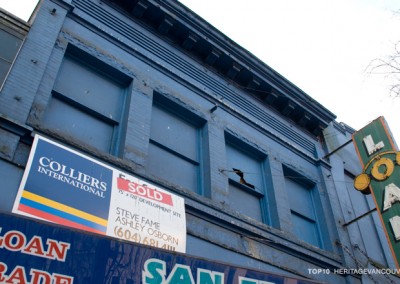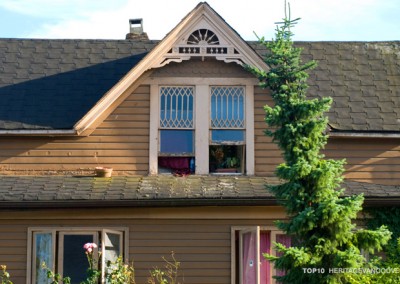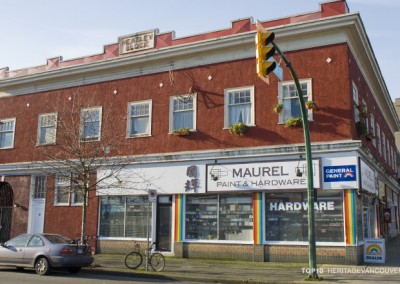800 Hornby Street
Robson Square is home to the Arthur Erickson-designed provincial buildings that put Vancouver on the map.
Built over six years starting in 1973, Erickson’s design for the Three-Block Project known as Robson Square employs concrete and glass as the predominant building materials—the forms are simple and rectilinear, employing verticals, horizontals and terraces, softened by the pools and green spaces designed by renowned landscape architect Cornelia Oberlander.
Envisioned by Erickson and Oberlander as a “linear urban park, importing nature into the city” and pioneering one of the first major uses of green roofs in North America, Robson Square won the prestigious American Society of Landscape Architects President’s Award of Excellence in 1979, where the jury commented on the “extraordinary integration of landscape architecture with architecture—consistent and coherent.” The complex is internationally recognized as a masterwork of modernist architecture.
The Provincial Government recently announced plans to build a giant wooden “clamshell” spanning Robson St. between Hornby and Howe. The clam is to provide a covered ‘live site’ showcasing BC wood products during 2010 Olympics and remain after the Games as a permanent ‘legacy’. The massive wooden arch, high enough for buses to pass under, would have an enormous physical and visual impact not only on Robson Square, but also on the Art Gallery, a National Historic site. The proposal bears no relationship to the form, material or design ethos of Arthur Erickson’s architectural masterpiece. This would be an urban design mistake of epic proportion.
Heritage Vancouver urges the Provincial Government to provide a more architecturally sensitive and functionally appropriate open space for the 2010 Olympics on the Georgia Street side of the Vancouver Art Gallery. This is the only portion of Mr. Erickson’s three-block-long scheme that was never completed. His concept was for a largely hard-surfaced plaza—adapting itself readily to multiple uses, ranging from concerts to demonstrations to ethnic fairs. The completion of this plaza would be a fitting legacy to the Olympics and to Arthur Erickson.
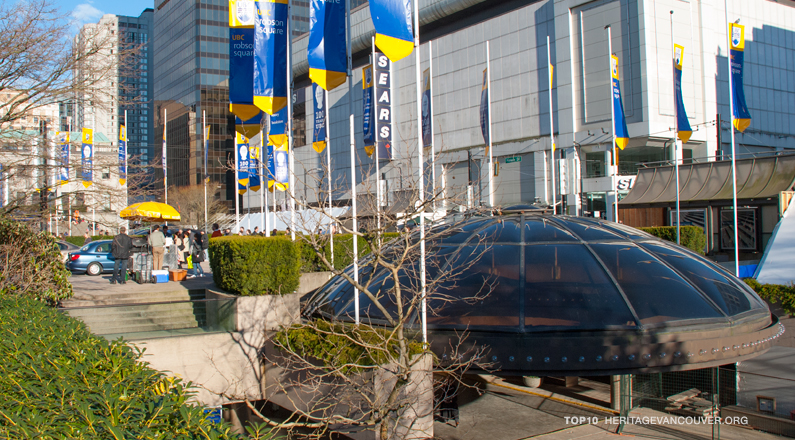

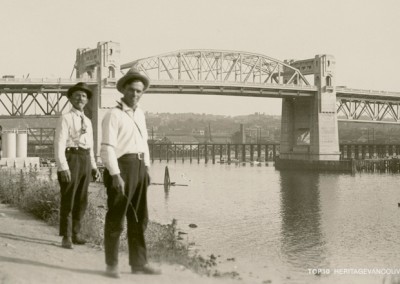
![2. Vancouver Schools – General Gordon Elementary [Lost]](http://heritagevancouver.org/wp-content/uploads/2008/10/HVS-Top10-795x440-general-gordon-400x284.jpg)
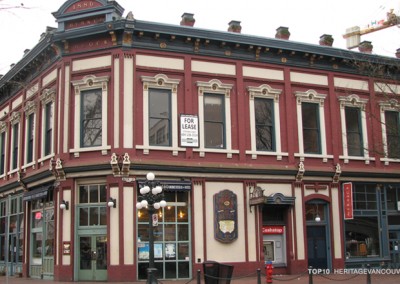
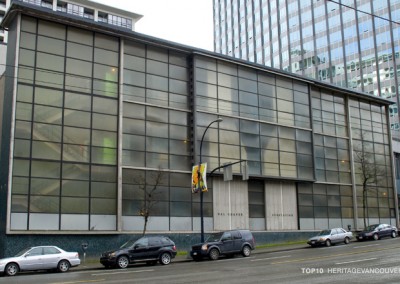
![6. York (Alcazar) Theatre (1913) [saved]](http://heritagevancouver.org/wp-content/uploads/2008/06/t10-york-795-400x284.jpg)
![7. Firehall No. 15 (1913) [saved]](http://heritagevancouver.org/wp-content/uploads/2001/06/firehall-No-15-400x284.jpg)
